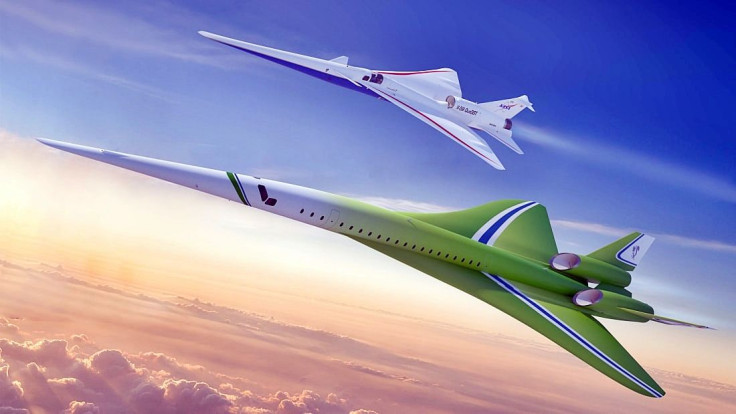Lockheed Martin Plans To Build Quiet Supersonic Passenger Airplane

Lockheed Martin Aeronautics this week unveiled a new supersonic airplane design that might herald the beginning of super-fast air travel.
The supersonic passenger jet that will bring this about is QSTA, or the Quiet Supersonic Technology Airliner. Concept drawings of this plane depict a sleek twin-engine jet plane. Lockheed Martin said QSTA will carry up to 40 passengers at speeds of Mach 1.8.
QSTA will have a range of 9,600 km (5,200 nautical miles), easily covering long-range routes such as New York-London, London-Beijing, Tokyo-Los Angeles and Tokyo-Sydney.
Lockheed Martin estimates the time saving on a London-Tokyo flight of 8,400 km will be 4 hours and 30 minutes.
The cabin is designed to accommodate 40 passengers in a single aisle configuration. There will only be one seat either side so all passengers will have window and aisle access.
"Ultimately airlines determine how they arrange their seats, but we've nominally configured the airplane for 40 passengers," said Lockheed Martin aerospace engineer Mike Buonanno. "We did considerable market research and found that this was the sweet spot for the size of this type of airplane, basically maximizing the number of markets that can be addressed by the airplane."
The key feature in QSTA is the word “quiet.”
Unlike the noisy and now retired Aérospatiale/BAC Concorde turbojet-powered supersonic passenger airliner, QSTA doesn’t generate the ear-splitting sonic booms Concorde was notorious for. These sonic booms prevented Concorde from operating over-land routes, greatly reducing its economic viability. Concorde remained in operation from 1976 until 2003.
Lockheed Martin said the quietness of QSTA might trigger a rethinking of regulations that prevent overland supersonic flight. It said it’s done early conceptual design studies to establish the design is feasible and did sizing for the concept.
QSTA will be powered by two turbofan engines that won’t have afterburners to drastically boost thrust. The twin engines will provide the aircraft with 40,000 pounds of thrust at ground level.
Lockheed Martin said the QSTA’s engine needs to be a new design since there are no off-the-shelf engines it can use as is for the airplane. QSTA will feature an extended super-sharp nose to sculpt sonic shockwaves that will cascade along the aircraft without the sonic boom created by Concorde.




























